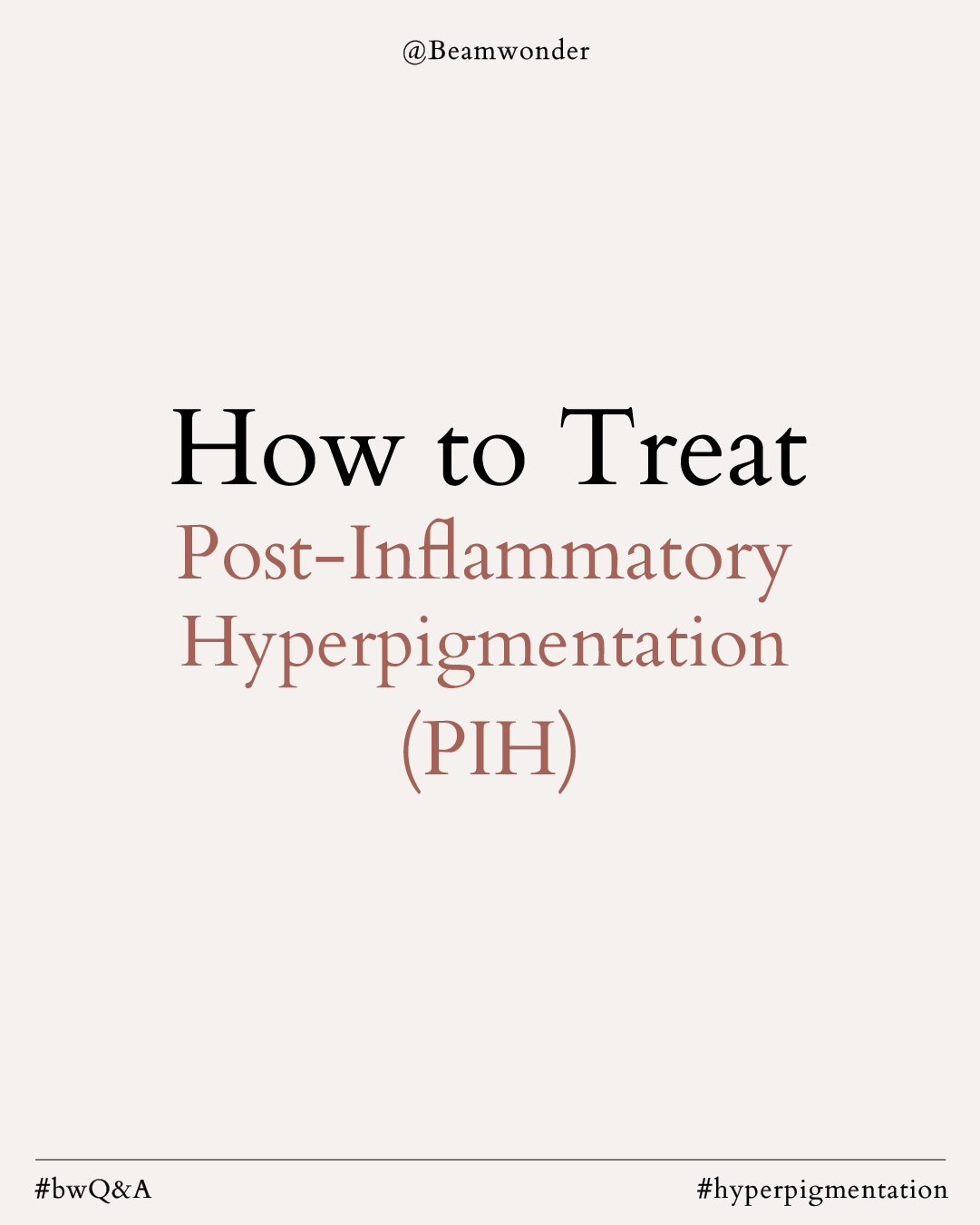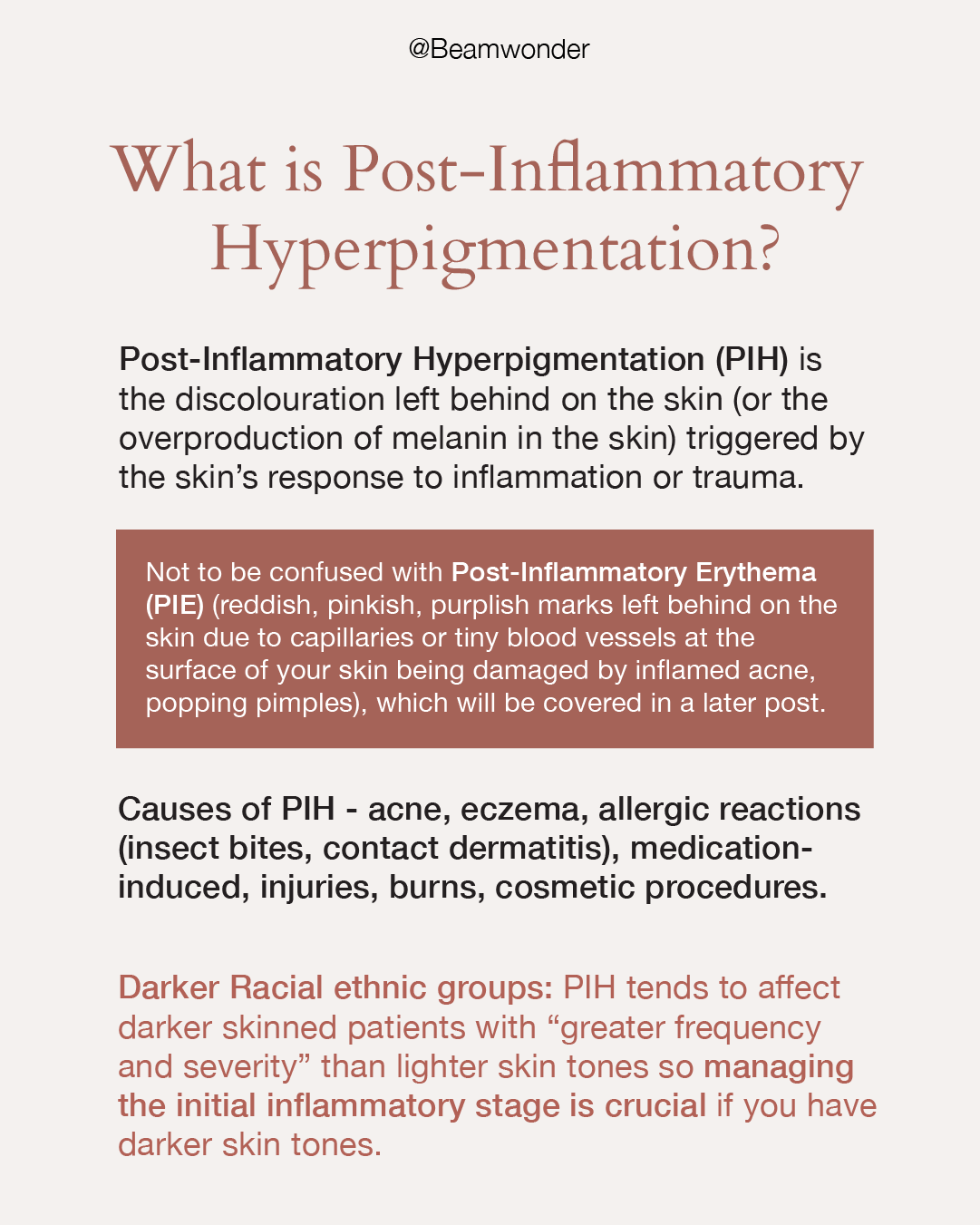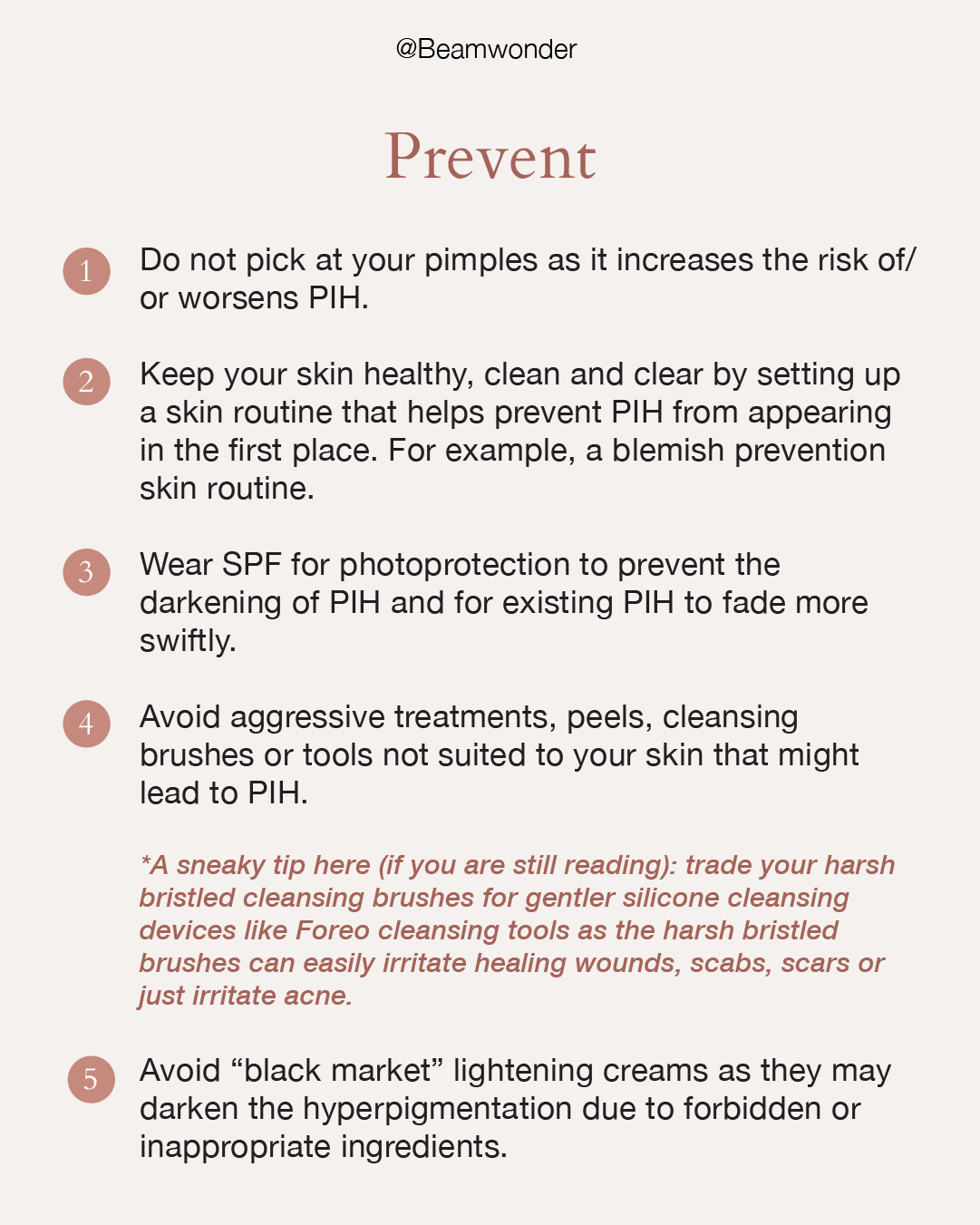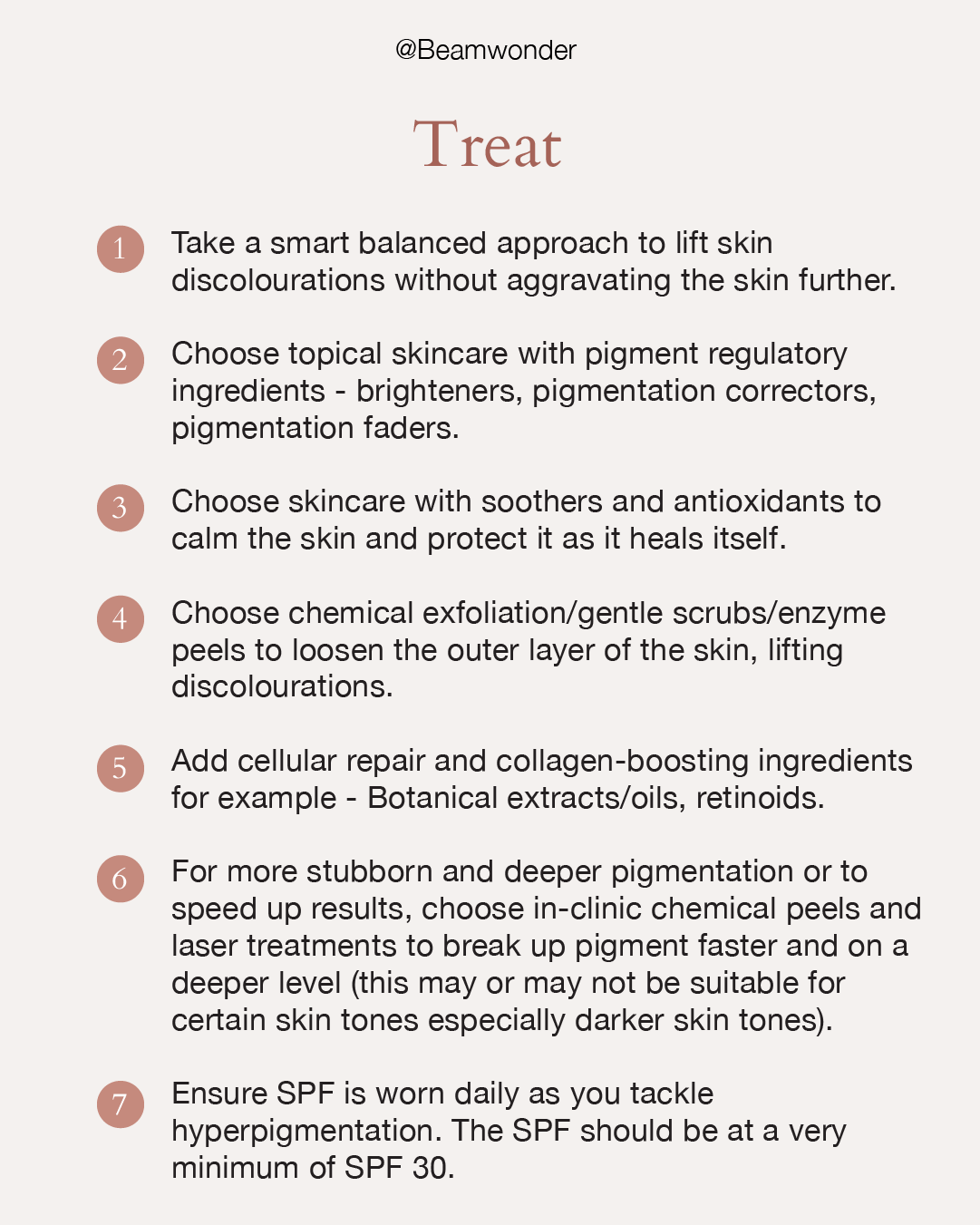



Ok you voted for this post today.
Post Inflammatory Hyperpigmentation (PIH) is something I struggle with constantly being darker in skin tone, once my active blemish is gone dealing with PIH is a given which can usually take 3-9months to fade (if left alone to heal).
“A study in 2002 evaluating acne in skin of color found that 65.3 percent of African-American (N=239), 52.7 percent of Hispanic (N=55), and 47.4 percent of Asian (N=19) patients developed acne-induced PIH” (ref below). Some studies go on to show 80-90% of coloured skin suffering from PIH post-acne.
So statistically speaking, if you have coloured skin the chances of you having to deal with PIH are HIGH O HIGH! .
See the above infographic to look into PIH further and we will go through PIE next week. Hope this helps.
Reference: Post Inflammatory Hyperpigmentation (Eica et al 2010)
